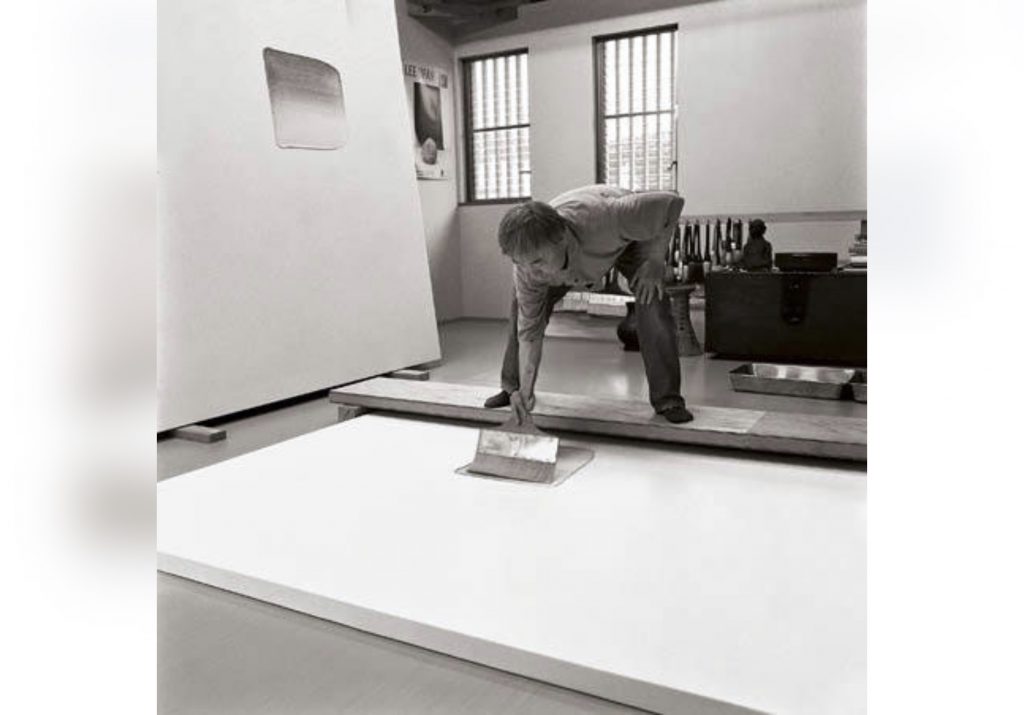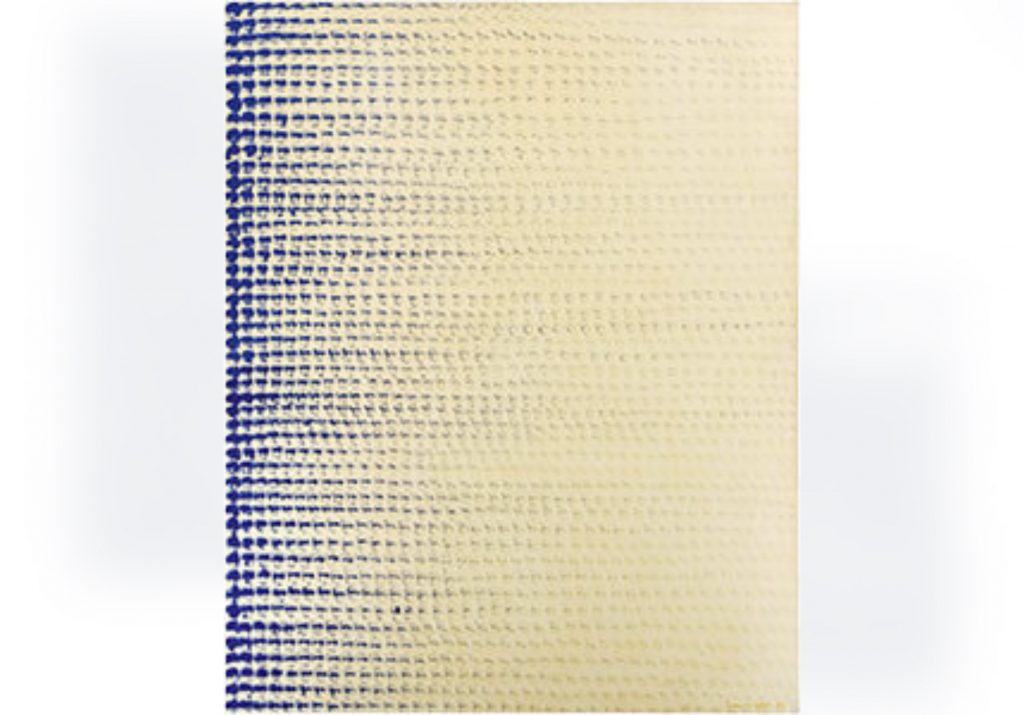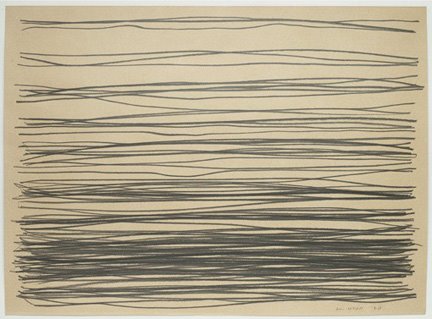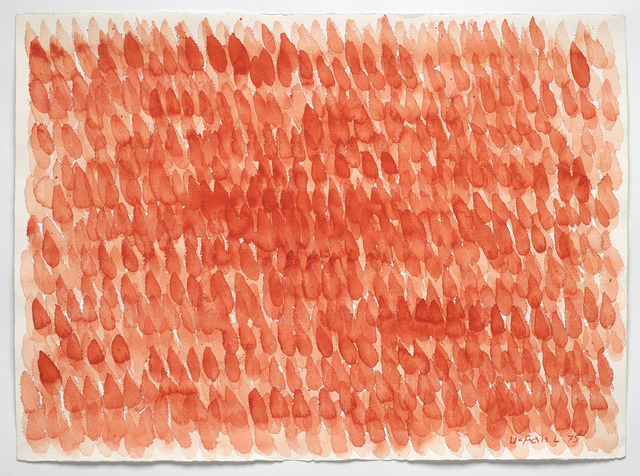
I want to study gestural drawings/art and ideas around expression. I learned that for Lee Ufan, each gesture is a continuation of a single moment lived through the body, first as the artist’s physical performance by painting and the again when viewer encounter the work and experience how these repetitive marks articulate the experience of time passing. In the above work, one sees the artist making a work. (This can be seen as action in process.) I see in the mark the trace of the artist’s gesture but can also see how he made the mark. Reading about the artist made me aware of his strong understanding of modern philosophy and in particular his interest in the phenomenology of M Heidegger and Maurice Merleau-Ponty. I take from this his understanding of bodily experience in making and expressing. He also has or years developed a strong sense for his own identity and difference and challenged Western(?) universal truths around power and knowledge construct. It seems that his goal is to create artworks in which there is a viewer encounter, rather than the artist’s background or intentions, takes center stage. I understand his ideas about Modernism is that it is an act of amplifying one’s ego, therefor he never believed in imposing himself as the creator. I became aware of this understanding when I was reading on Jackson Pollock and the Action Painters, Lee Ufan clearly did not want to be associated with a strong male figure doing the work.
‘My paintings are not a direct representation of an image, nor are they concerned with a particular meaning, rather they are the phenomenological result of a temporal gesture created by neutral actions.’ (Lee Ufan: From Point, From Line, From Wind, Pace Gallery, London, 2015, p. 27)
I felt strong to look at his process and how it developed over time. I might and experiment with it myself. Somewhere in this repetitive making, I assume one will come to questions about dialogue, encounters, formlessness, emptiness, empty space, silence, invisible forces, rhythm, consciousness, phenomena like a lived experience.
In his work From Point, in 1973, he loads his brush with pigment and marks the white canvas with regular dabs from left to right until there is no more color left on the brush, then he repeats the gesture until the entire canvas is graphed with rows of gradually fading marks. He worked on a flat surface on the floor, involving his entire body. He worked on a primed canvas and used his own mixed ground mineral pigment with an animal skin glue used for painting on silk (nikawa) It was a powdery crystalline emulsion in either cobalt blue or burnt orange. If compared to the above image where he is working in his studio, the brushes and canvas size differ a lot, as well as the strokes here work with. HIs gestures for Dialogue were deliberate and limited – apparently guided by restraint to procude this emptiness.

I started off with reading on his ideas on Point and Line as the basic units of the cosmos – the one leading to all, the all reducible to one. I see the fluidness in the work and value the artist’s materials-based paintings/drawings/sculptures.
Below are some of his monochrome works in his From Point series, 1975.


So how does his gestural mark-making happen? I think it is important to consider Ufan’s ideas about literati principles: “….all things in the universe start form a point and return to a point. One point calls up a new point, and extends into a line. Everything is a scene of gathering and dispersal of points landlines. Existence is a point and life is a lines I am also a point and a line.” (Lee, ‘Fragments from the catalogue ‘Lee Ufan, ‘ published by Bijutsu Shuppan in 1986, No.60″ (1967-1986), in The Art of Encounter, p. 200)’